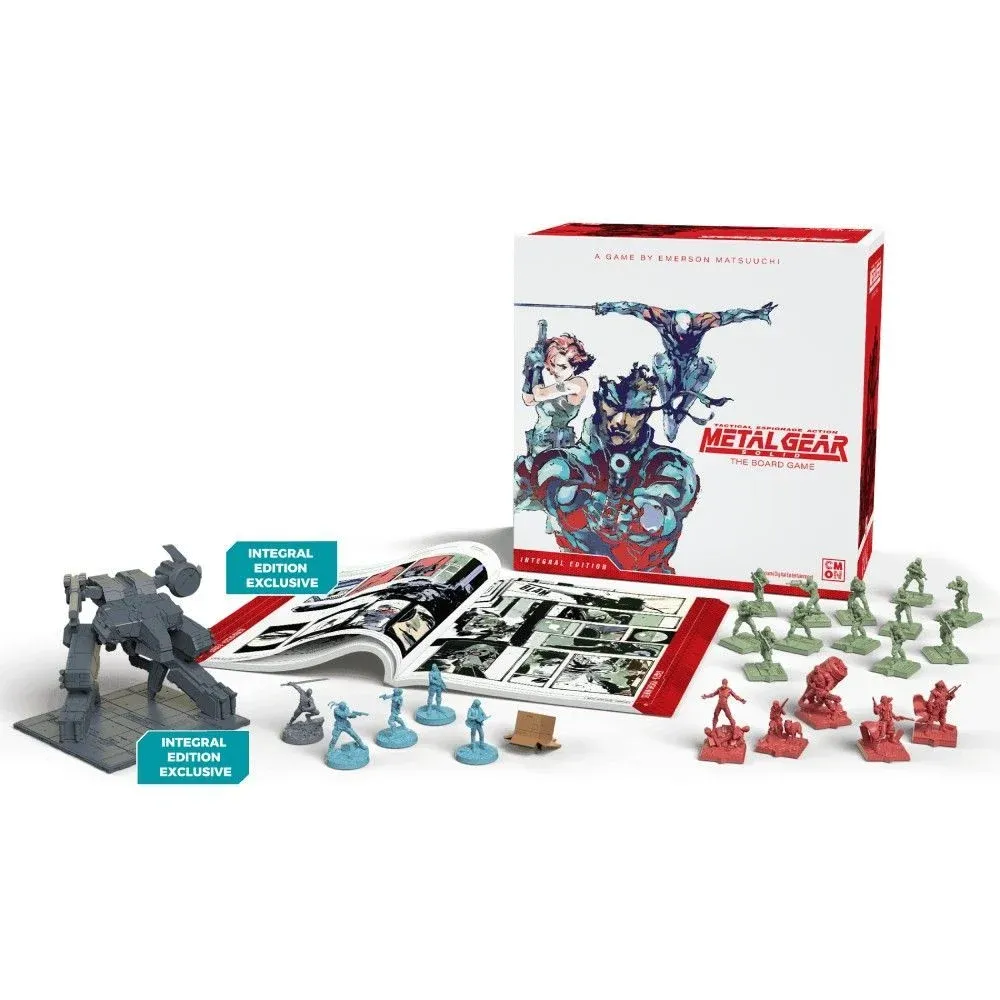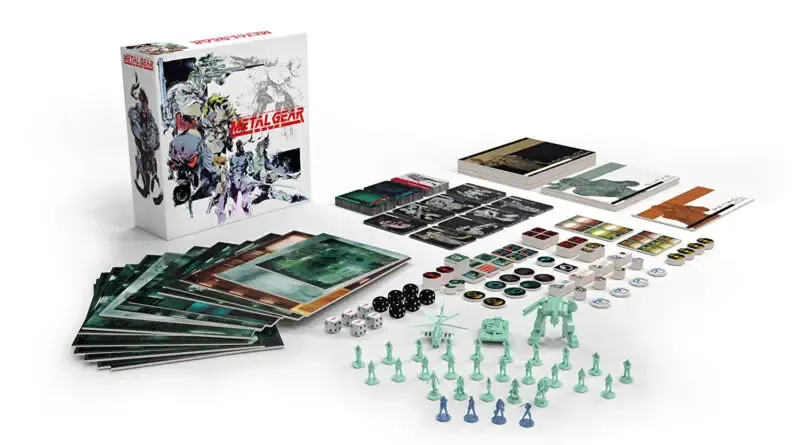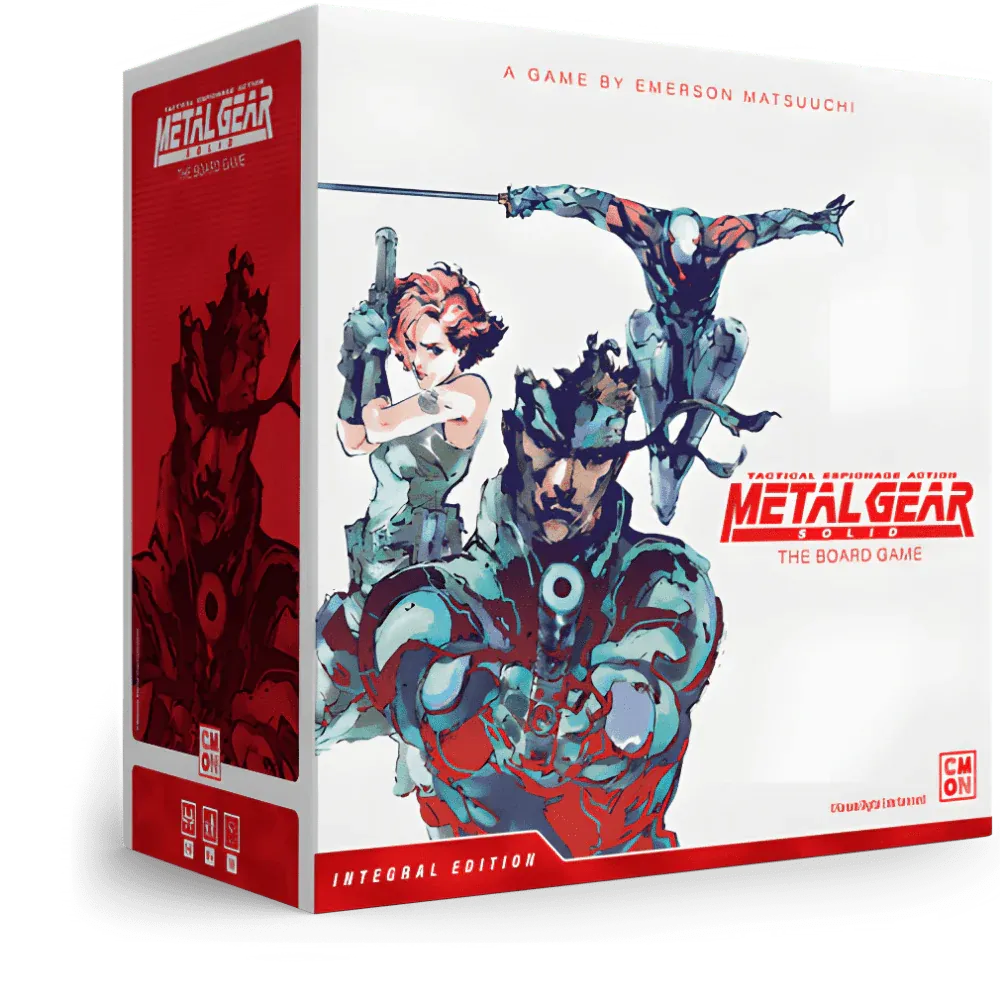The journey of Metal Gear Solid: The Board Game to players’ tables has been nearly as elaborate as the plotlines found in the Metal Gear franchise itself. After facing numerous delays and licensing challenges, the project seemed doomed to obscurity. However, much like Solid Snake swooping in to rescue Gray Fox, CMON Games ultimately stepped in to revive and release this long-awaited adaptation. Now, the beloved stealth-action gameplay has made its leap from digital to physical form, bringing with it everything from stealthy cardboard box antics to climactic boss battles. Still, while the final product impresses in many areas, it doesn’t fully escape a few notable shortcomings.
Gameplay and Setup Overview
Designed as a campaign-style game, Metal Gear Solid: The Board Game retells the iconic events of the original Metal Gear Solid, which debuted on the PlayStation in 1998. Suitable for one to four players (though the optimal experience tends to be with fewer), participants control miniatures representing key characters such as Solid Snake, Meryl, Otacon, and Gray Fox across 14 carefully crafted scenarios. These missions include legendary moments like the Ocelot shootout, the PAL keycard sequence, and the intense battle against Metal Gear REX.

However, there’s a surprising omission in the campaign structure: the absence of the game’s final confrontations between Solid Snake and Liquid Snake. The memorable barehanded battle atop REX and the subsequent Jeep escape have been excluded. It’s possible the developers struggled to balance a 4-versus-1 setup or incorporate the escape sequence with all player characters. Instead, the campaign concludes with a thrilling cooperative showdown against REX. Fortunately, dedicated fans have stepped in to fill this gap. One example is a user-created Stage 15 scenario shared by @Geoff907 and their spouse on BoardGameGeek, providing an optional extension for those eager to experience the iconic fistfight conclusion.
The Integral Edition and CODEC Implementation
Players opting for the premium “Integral Edition” are treated to additional narrative content presented in a striking 109-page graphic novel, illustrated by Kenneth Loh. This style draws inspiration from Peace Walker and the PSP’s Digital Graphic Novels, delivering the rest of the story in a visually compelling format. CODEC conversations, a staple of the Metal Gear series, have also been thoughtfully incorporated. Scenario briefings, mid-mission chatter, and debriefings are included via a dedicated Codec Book. These moments manage to preserve the quirky-yet-informative tone of the original games. For instance, Snake discusses the number of available actions or gives subtle nods to classic mechanics like using a second controller to defeat Psycho Mantis, translating the spirit of the digital CODEC into tabletop form.
Tactical Gameplay and Equipment Progression
Gameplay revolves around strategic decision-making and stealth. Players can perform up to four actions per turn, choosing from options on each character’s individual player board. As the campaign progresses, characters acquire familiar equipment, from Snake’s signature SOCOM pistol to the ever-reliable cardboard box. These upgrades expand tactical options and echo the series’ hallmark “procure on-site” philosophy.

After players act, the enemy takes its turn. Guard and boss movements are determined by action cards, which vary based on whether players are detected. A separate reaction deck introduces unpredictability—guards may investigate noises or react to downed comrades. Boss fights, in particular, offer distinct and memorable challenges, each demanding different strategies. Whether it’s Ocelot ricocheting bullets across walls or the Hind D’s multi-target assault, each encounter occurs on unique maps, complete with scenario-specific hazards. For instance, Kenneth Baker’s presence during Ocelot’s fight introduces the possibility of an unintended game over, heightening tension.
This blend of randomness and strategy means players must adapt continuously. Dice rolls determine whether noise alerts enemies or attacks succeed, keeping every turn suspenseful. Drawing a guard movement card with bated breath becomes a recurring moment of tension. The game’s systems are finely balanced, neither punishingly difficult nor overly forgiving.
Player Count and Campaign Limitations
Although the game advertises support for up to four players, this claim mostly applies to select scenarios. In the main campaign, only five of the 14 missions allow for four participants, and no scenarios are tailored for three players. The first mission that allows four players doesn’t appear until the ninth scenario. As a result, many sessions must be played solo or with just one partner.

Narratively, this restriction aligns with the storyline—certain characters logically wouldn’t team up in the original game’s context. However, from a gameplay standpoint, this limitation restricts group play. Convincing multiple Metal Gear fans to play can be challenging when most won’t have an active role until late in the campaign. It would have been beneficial if there were optional tweaks or “what if” scenarios that permitted more flexibility in player counts and team compositions.
VR Missions: Extra Content with Room to Grow
To address the limited multiplayer campaign options, the developers introduced a separate mode: “VR Missions.” This alternative game mode supports up to four players and includes its own set of equipment cards to unlock. It features six mission types, such as Recon, Escape, and Sabotage.
However, the VR Missions come with a major caveat: a lack of variety. Each mission type only has one map layout. While tokens, traps, and enemies can be swapped for added challenge—like inserting a boss model—the objectives and core structure remain fixed. Once players become familiar with a mission, the replay value diminishes rapidly. There is hope that CMON or the fan community will create and release additional maps to breathe new life into this mode.
Final Thoughts
Despite a few limitations—particularly in campaign flexibility and VR content depth—Metal Gear Solid: The Board Game succeeds in bringing the franchise’s signature stealth-action gameplay to the tabletop. With dynamic boss fights, authentic CODEC implementation, and clever mechanics that echo the spirit of the video game, it delivers an experience that feels undeniably Metal Gear. It’s not without flaws, but for fans of the series and tactical board games alike, this is a mission worth accepting.
